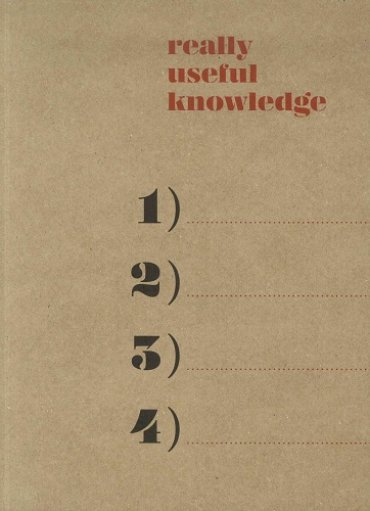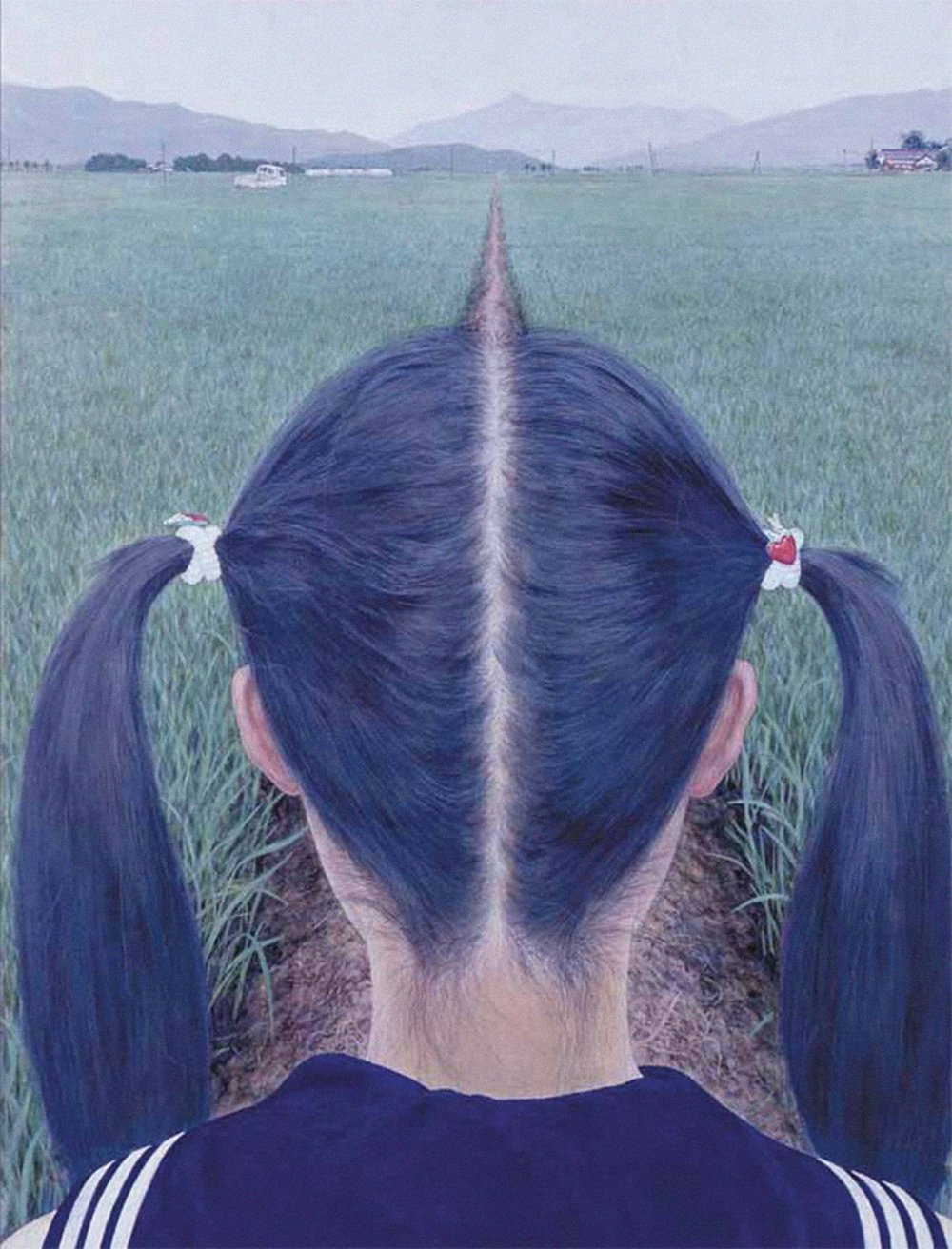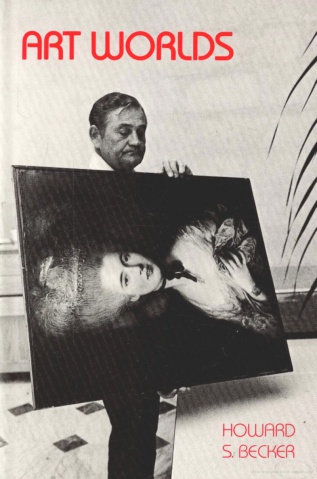Really Useful Knowledge (2014)
Filed under catalogue | Tags: · art, conceptual art, critical pedagogy, education, knowledge, pedagogy, politics, sociology of art, theory, useful art

“This catalogue investigates the notion of “really useful knowledge” and its origins. In the 1820s and 1830s, working class organisations in the UK introduced this phrase to describe a body of knowledge that encompassed various “unpractical” disciplines such as politics, economics and philosophy, as opposed to the “useful knowledge” proclaimed by business owners who had previously begun to invest more heavily in their companies’ progress through financing workers’ education in “applicable” disciplines like engineering, physics, chemistry and mathematics. The publication presents texts and conversations that analyse these themes, including philosophy, art, politics and technology.”
With contributions by What, How and for Whom/WHW, Marina Garcés, Raqs Media Collective, Luis Camnitzer, Trevor Paglen and Jacob Appelbaum, Fred Moten and Stefano Harney, and Gáspár M. Tamás.
Curated by What, How and for Whom/WHW
Publisher Museo Nacional Centro de Arte Reina Sofía (MACBA), Barcelona, 2014
ISBN 9788480264990, 8480264993
285+[10] pages
Discussion: Charles Esche, Manuel Borja-Villel (L’Internationale, 2015).
PDF (14 MB)
Comment (0)Adrian Favell: Before and After Superflat: A Short History of Japanese Contemporary Art, 1990-2011 (2012)
Filed under book | Tags: · 1990s, 2000s, art criticism, art history, contemporary art, japan, sociology of art, superflat

“Any discussion of Japanese contemporary art inevitably leads to the pop-culture fantasies of Takashi Murakami, Yoshitomo Nara and the other artists of the Superflat movement. But Japan as a whole has changed dramatically after stumbling through a series of economic, social and ecological crises since the collapse of its ‘bubble’ economy in the early 1990s. How did Murakami, Nara and Superflat become the dominant artistic vision of the Japan of today? What lies behind their imagery of a childish and decadent society unable to face up to reality? Written by a sociologist with an eye for sharp observation and clear reportage, Before and After Superflat offers the first comprehensive history in English of the Japanese art world from 1990 up to the tsunami of March 2011, and its struggle to find a voice amidst Japan’s economic decline and China’s economic ascent.”
Publisher Blue Kingfisher, Hong Kong, 2012
ISBN 9789881506412, 9881506417
246 pages
via author
Reviews: Janet Koplos (Art in America, 2012), Ashley Rawlings (Art Space Tokyo, 2012), David Cozy (Japan Times, 2012), Modern Art Asia (2012).
Comment (0)Howard S. Becker: Art Worlds (1982–)
Filed under book | Tags: · aesthetics, art, art criticism, art history, art system, sociology of art

This classic sociological examination of art as collective action explores the cooperative network of suppliers, performers, dealers, critics, and consumers who—along with the artist—”produce” a work of art. Howard S. Becker looks at the conventions essential to this operation and, prospectively, at the extent to which art is shaped by this collective activity. He draws examples from music, drama, dance, literature, film, and the visual arts.
“Maybe the years I spent playing the piano in taverns in Chicago and elsewhere led me to believe that the people who did that mundane work were as important to an understanding of art as the better-known players who produced the recognized classics of jazz. Growing up [..] may have led me to think that the craftsman who help make art works areas important as the people who conceive them. My rebellious temperament may be the cause of a congenital antielitism. Learning the ‘Chicago tradition’ of sociology from Everett C. Hughes and Herbert Blumer surely led to a skepticism about conventional definitions of the objects of sociological study.” (from Preface)
Publisher University of California Press, 1982
ISBN 0520043863, 9780520043862
392 pages
via drebubbles
Review: Michael S. Kimmel (American Journal of Sociology, 1983)
PDF (44 MB, updated to OCR’d version on 2014-2-17 via Marcell Mars)
PDF (25th Anniversary Edition, Updated and Expanded, 2008, 39 MB, added on 2024-7-23)

